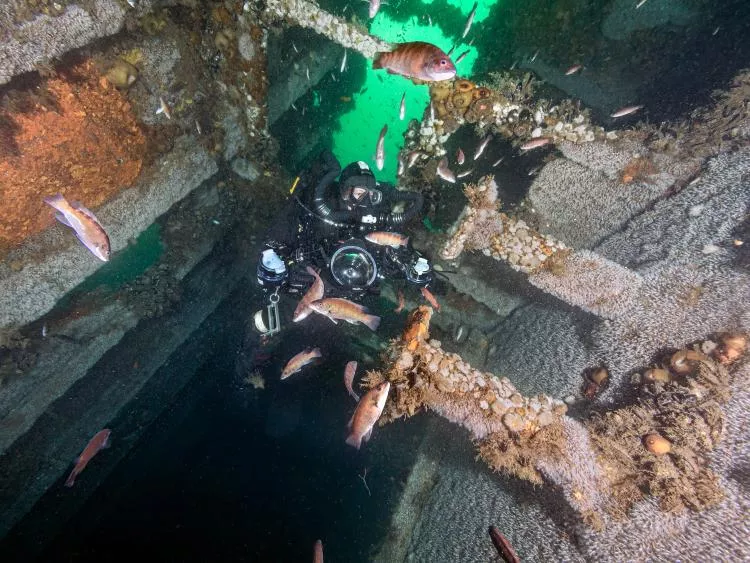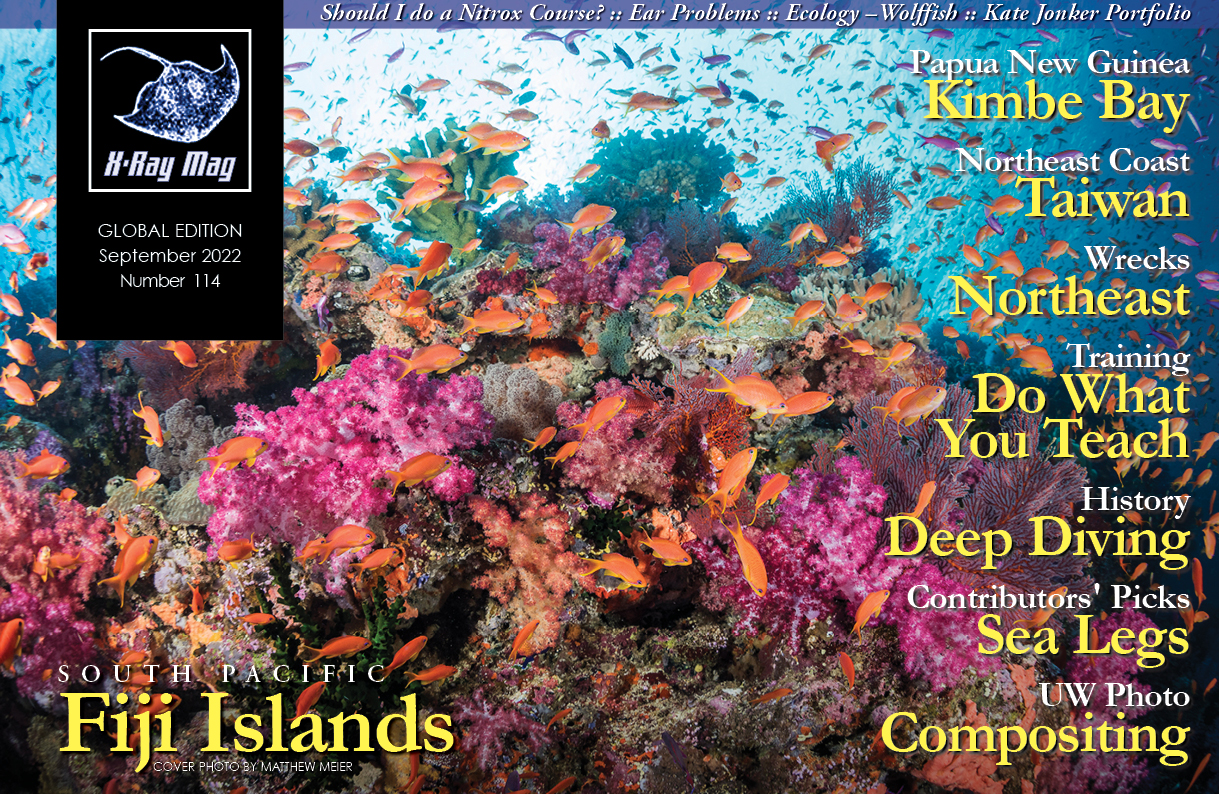The US eastern seaboard, along the New York and New Jersey coasts, is littered with ships that sank due to collision. Larry Cohen and Olga Torrey present several of these wreck sites, which wreck divers enjoy diving.
Contributed by
Stolt Dagali
The Stolt Dagali was a Norwegian tanker built in 1955 in Denmark. She was 12,723 gross tons—582ft long, with a 70ft beam. On 26 November 1964, Thanksgiving Day, at 2 a.m., she collided with the 25,338-ton ZIM Israel liner Shalom, 18 miles off Manasquan Inlet, New Jersey. The Shalom was sailing fast through thick fog while misreading her radar.
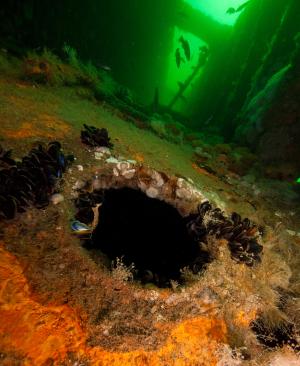
As a result, she hit the slow-moving M-class tanker Stolt Dagali and sliced her in half. The 143ft long stern section of the Stolt Dagali sank in 130ft of water, and almost half the crew was lost. The bow section of the Stolt Dagali was salvaged and refitted with the stern of the CT Gogstad. In the summer of 1965, the ship was named the Stolt Lady.
The stern of the Stolt Dagali is an impressive wreck sitting in 130ft of water. The top starts at 65ft. The highest point of the wreck is the port. Starting the dive at 65ft feels like doing a wall dive. The structure is covered with hydroids, anemones, encrusting sponges, and mussels of various colors. There are always large schools of fish around the ship. There are large openings so you can penetrate the superstructure. It is also possible to visit the engine room.
The Stolt Dagali is a true multi-level dive that new and experienced divers can enjoy. There is plenty to see above 75ft for the new diver. The experienced diver can explore the ship’s interior and the wreckage down to 130ft. Getting to the wreck site is a long boat trip from Point Pleasant and other New Jersey marinas, but it is worth the ride. Visibility is usually good, and most of the time, there is not much current. The Stolt Dagali is a wreck worth visiting.
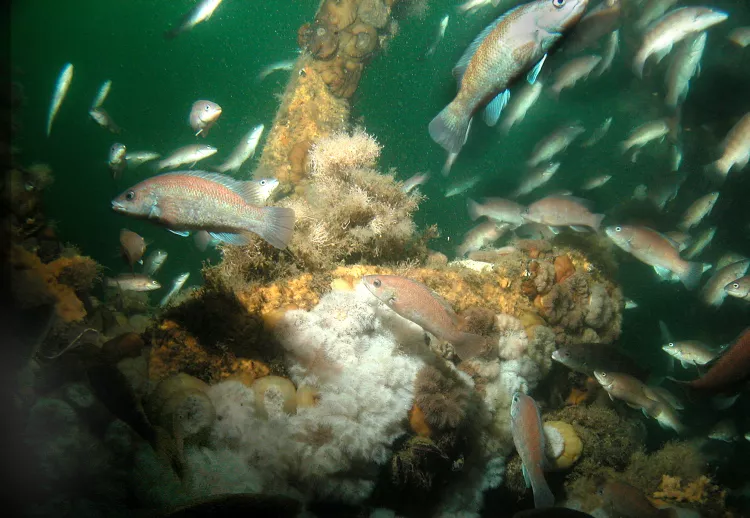
SS Oregon
The Cunard Liner SS Oregon is one of the most historic wrecks off the South Shore of Long Island, New York. The ship, which was 7,500 gross tons and 518ft long, with a 54ft beam, was built in Scotland in 1881. The Oregon was built for speed and luxury. Before being sold to the Cunard Line, it was owned by the Guion Line, and, in 1884, it won the Blue Riband as the fastest liner on the Atlantic. The Oregon was a steamship but was still rigged with sails. Its hull was made of iron, since steel was costly.
On 6 March 1886, the ship set sail from Liverpool, heading to New York. There were 647 passengers (186 First Class, 66 Second Class, and 395 Steerage) and a crew of 205. The ship also carried 1,835 tons of cargo and 598 bags of mail. At about 4:30 a.m. on March 14th, she collided with an unknown schooner. The schooner sank right away with everyone on board.
The Oregon now had a hole one passenger said was large enough for a horse and carriage to pass through. The crew attempted to plug the hole with canvas, but the captain gave the abandon-ship order two hours later. The ship had ten lifeboats and three emergency rafts on board. Unfortunately, this was only enough for the passengers, but men from the boiler room pushed ahead of the women and children. The first lifeboat was launched only with those men. Officers and another group of men restored order in the evacuation.
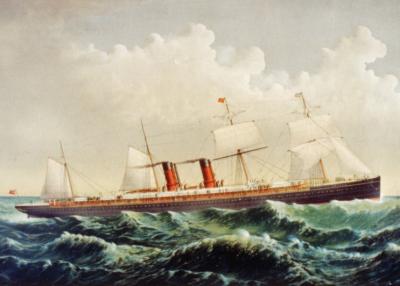
At 8:30 a.m., the pilot boat Phantom and the schooner Fannie A. Gorham responded to flares launched by the Oregon and saved all the passengers and crew. At 10:30 a.m., eight hours after the collision, the Oregon sank bow first in 125ft of water. For some time, her mast stayed above water.
Cunard sent divers to the site to determine if the ship was salvageable. Since the hull broke open, this was not possible. The loss was US$3,166,000. This included US$1.25 million for the ship, US$700,000 for cargo, US$216,000 in passenger baggage, and US$1 million for valuables in the mail. The Oregon’s purser saved a large shipment of diamonds that was in the safe.
The Oregon is about 18 miles off Fire Island, along the New York coast. This offshore wreck is worth visiting but is an advanced dive. Most of the ship has collapsed and is in 125ft of water. The massive triple-cylinder steam engine comes up to 85ft. Many dive boats use this as the tie-in point. In front of the engine, the nine boilers are still intact.
Another site, which is great for photographs, is the large 20ft-across steering quadrant in the stern. The rest of the ship is low-lying and in disarray. The outer edge of the Oregon is still noticeable, but running a line is still a good idea on this wreck.
There is a large amount of marine life here, and the wreck is home to many giant lobsters. In addition, the Cunard Line’s fine china and items from the passengers’ baggage are prized artifacts that divers are still recovering.
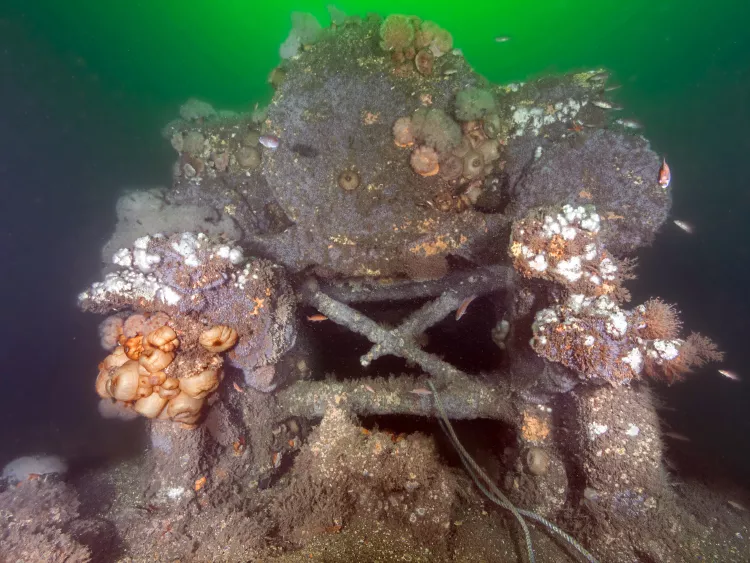
Locomotives
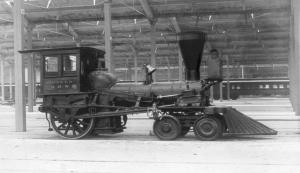
Not all wrecks underwater are ships. One of the strangest sites underwater is the site of two tiny locomotives, located off the central New Jersey coast. It is also a mystery how they ended up in the water. Captain Paul Hepler of the Venture III discovered the locomotives in 1985, NOAA surveyed them in 1991, and Dan Lieb with the New Jersey Historical Divers Association (NJHDA) did more research in the early 2000s.
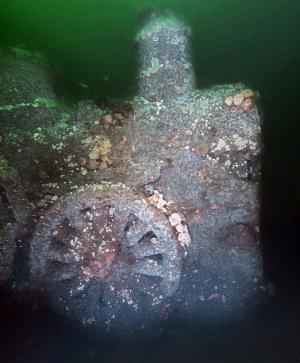
This tiny dive site is not visited often but is of archaeological significance. David Dunn, director of the Railroad Museum of Pennsylvania, said, “the six-wheeled engines are among the earliest American workhorse locomotives, designed during an era when these machines were considered the space shuttles of the mid-19th century.” Based on the way the engines are built, it is believed they might be from Seth Wilmarth Union Works. This company from South Boston manufactured locomotives from 1848 until 1855.
It is a puzzle how they ended up in the water. Based on their position, it is believed that they were swept overboard in bad weather, or their lashings broke, and they slid off the deck.
Peter E. Hess, a Wilmington lawyer representing the New Jersey Museum of Transportation, won legal protection for the engines. The museum wanted to prevent divers from removing artifacts and, at some point, would like to raise the locomotives.
The locomotives are in 85ft of water, and it is a long boat ride to get to the wreck site. Visibility is usually not good, but it is still a fascinating historical site worth visiting as a second dive.
Pinta
The Pinta was a Norwegian freighter built in 1959 in Denmark. She was 1,000 gross tons—194ft long, with a 31ft beam. On 8 May 1963, the small ship collided with the 7,547-ton freighter the City of Perth, seven miles east of Shark River Inlet, New Jersey.
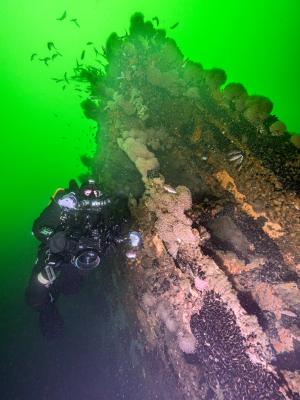
She was carrying Central American lumber, unloaded most of it in Norfolk, Virginia, and was heading to New York. At around 8 p.m., the City of Perth rammed the Pinta forward of the bridge. The ship took on water and sank within the hour. The crew of 12 abandoned the vessel in one of the lifeboats. The City of Perth picked them up and took them to safety.
The wreck sits in 85ft of water, and she is lying on her port side. The Pinta still looks like a ship but, over the years, has been decaying. The top of the wreck is covered with anemones, hydroids and mussels. Because of the wreck’s small size and the lumber in the cargo holds, it is a squeeze to penetrate the vessel. Nevertheless, it is still worth getting inside to capture some sizable lobsters.
These are just a few of the fascinating wrecks that sank off the New York and New Jersey coasts due to collision. Our next and last article in the series will explore ships sunk on purpose, as part of state artificial reef programs.
SOURCES: njscuba.net, wikipedia.org

